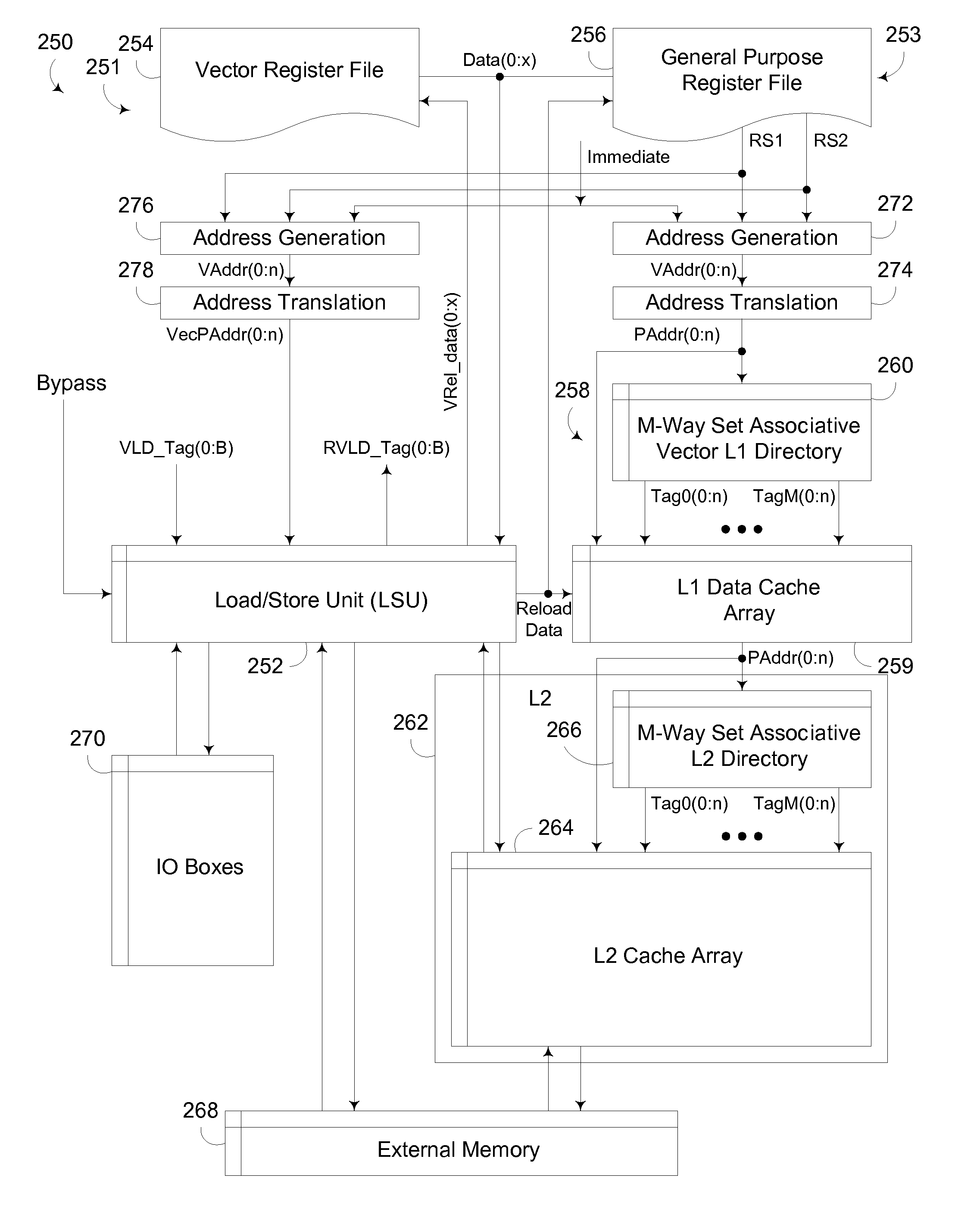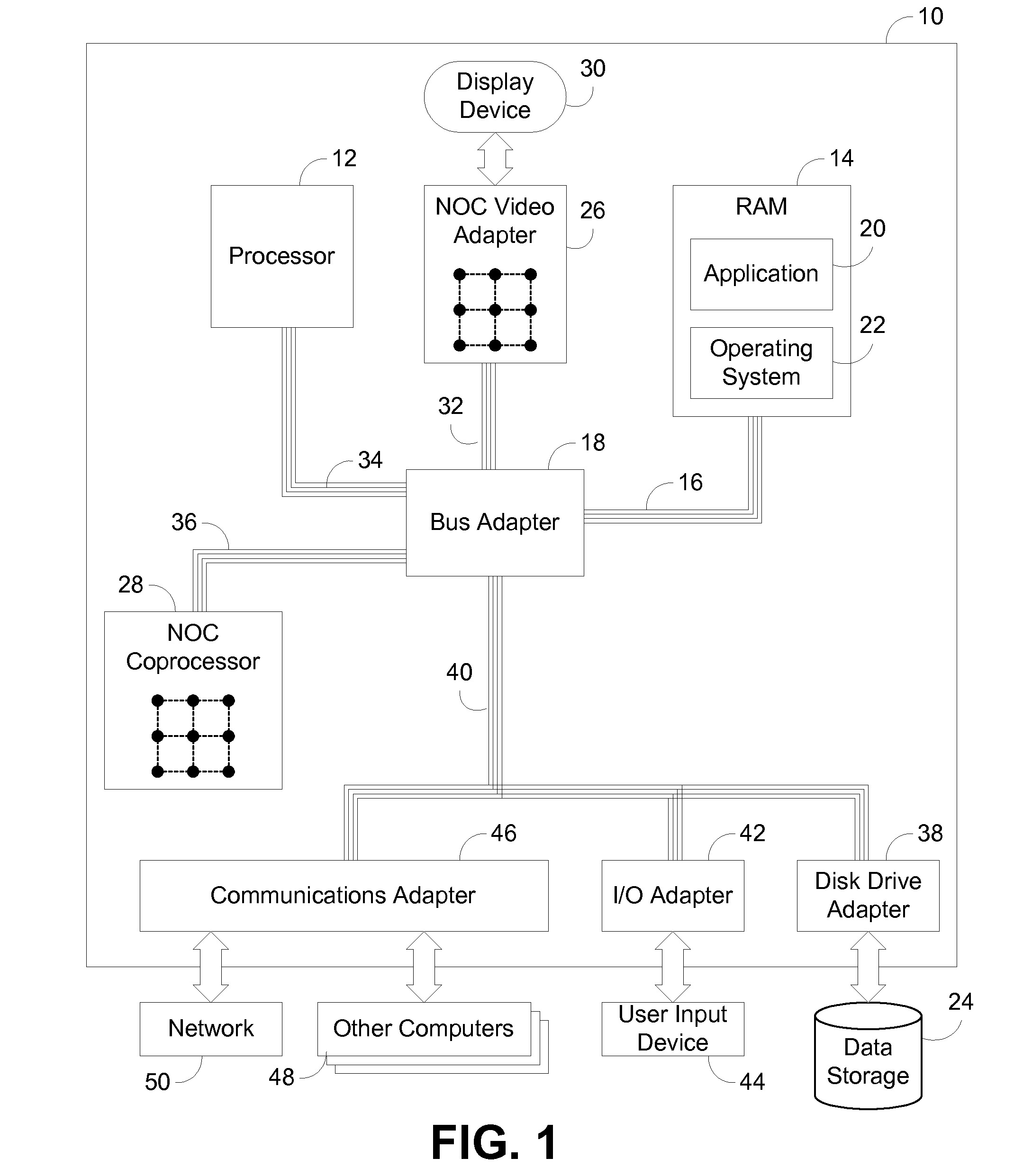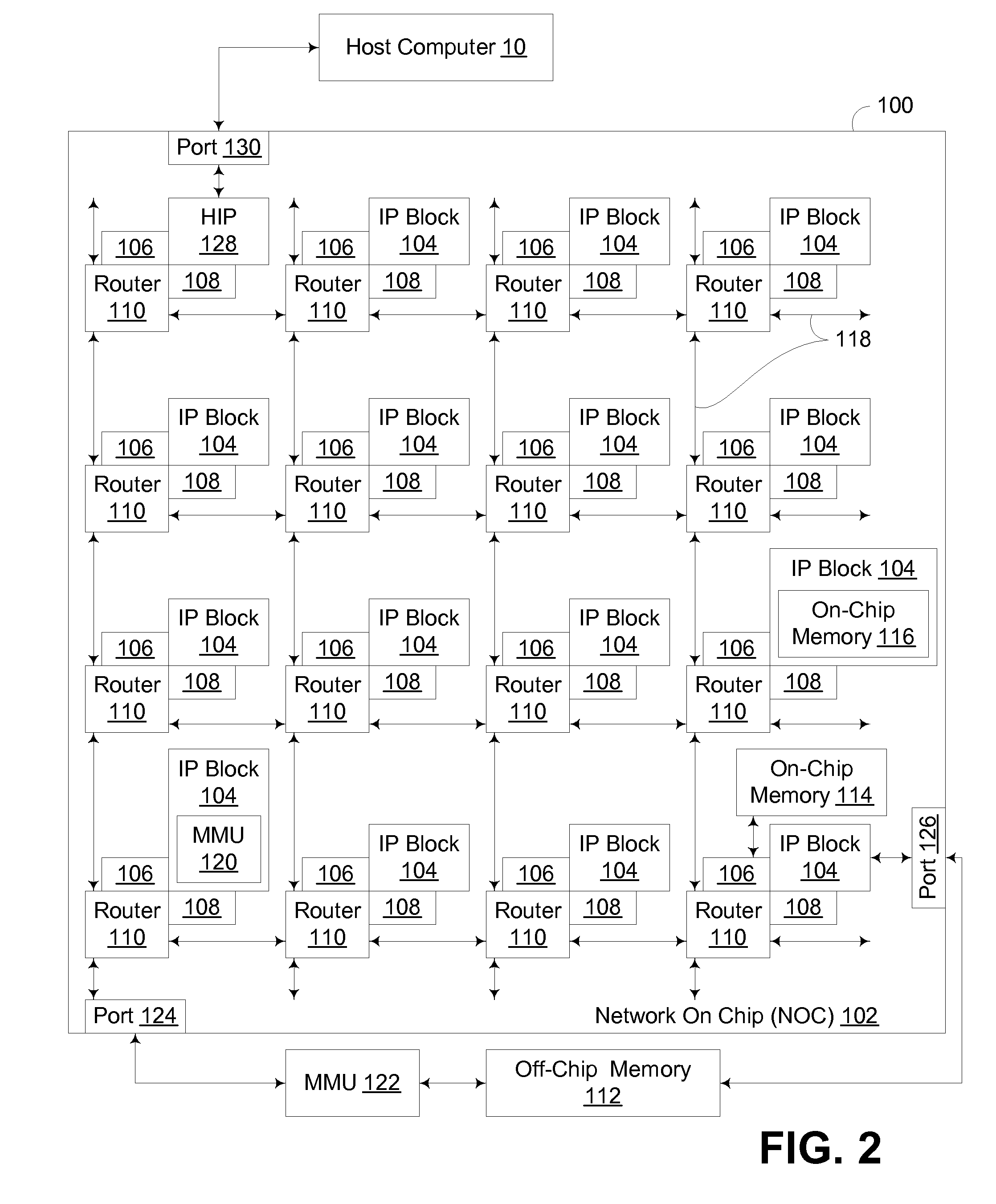Processing Unit Incorporating L1 Cache Bypass
a processing unit and cache bypass technology, applied in computing, memory adressing/allocation/relocation, instruments, etc., can solve the problem of reducing the likelihood of the requested data casting out frequently used data from the higher level cache by bypassing storage in the higher level cach
- Summary
- Abstract
- Description
- Claims
- Application Information
AI Technical Summary
Benefits of technology
Problems solved by technology
Method used
Image
Examples
Embodiment Construction
[0023]Embodiments consistent with the invention implement an L1 cache bypass technique to bypass the storage of requested data in a higher level cache of a multi-level memory architecture during the return of the requested data to a requester, while caching the requested data in a lower level cache. Thus, for certain types of data, e.g., vertex data used in image processing, or other data that is only used once and / or that is rarely modified or written back to memory, bypassing storage in a higher level cache reduces the likelihood of the requested data casting out frequently used data from the higher level cache, e.g., program stacks and / or local variables. In addition, by caching the data in a lower level cache, the lower level cache can still snoop data requests and return requested data in the event the data is already cached in the lower level cache.
Hardware and Software Environment
[0024]Now turning to the drawings, wherein like numbers denote like parts throughout the several ...
PUM
 Login to View More
Login to View More Abstract
Description
Claims
Application Information
 Login to View More
Login to View More - R&D
- Intellectual Property
- Life Sciences
- Materials
- Tech Scout
- Unparalleled Data Quality
- Higher Quality Content
- 60% Fewer Hallucinations
Browse by: Latest US Patents, China's latest patents, Technical Efficacy Thesaurus, Application Domain, Technology Topic, Popular Technical Reports.
© 2025 PatSnap. All rights reserved.Legal|Privacy policy|Modern Slavery Act Transparency Statement|Sitemap|About US| Contact US: help@patsnap.com



